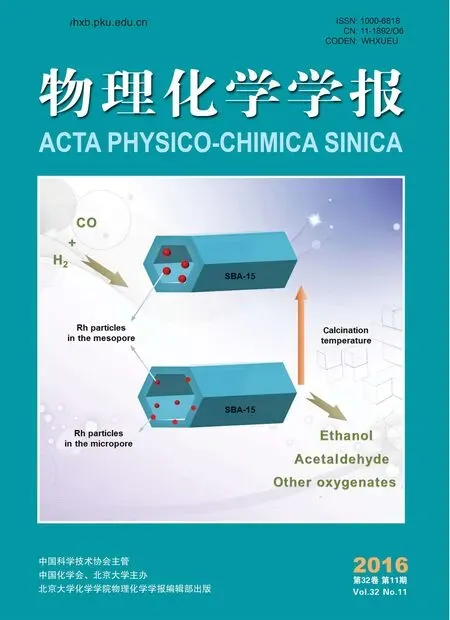两步沉积法制备Br或Cl掺杂的有机-无机杂化钙钛矿太阳电池
2016-12-29王艳青聂林辉李楠楠史成武
王艳青 李 龙 聂林辉 李楠楠 史成武,
(1合肥工业大学宣城校区化工与食品加工系,安徽宣城242000;2合肥工业大学化学与化工学院,合肥230009)
两步沉积法制备Br或Cl掺杂的有机-无机杂化钙钛矿太阳电池
王艳青1,*李 龙1聂林辉1李楠楠2史成武1,2
(1合肥工业大学宣城校区化工与食品加工系,安徽宣城242000;2合肥工业大学化学与化工学院,合肥230009)
采用控制前驱体浓度的两步沉积法和插入PbI2层的DMSO分子(PbI2(DMSO)复合体)分别与MAX (MA=CH3NH3,X=I,Br)或MAX(X=I,Cl)进行的分子内交换法,实现了Br或Cl的掺杂并合成了厚度为300 nm左右的混合卤化物钙钛矿MAPbI3-xBrx和MAPbI3-xClx膜。MAX前驱体溶液中含5%(摩尔分数,下同) MABr或15%MACl所生成的Br或Cl掺杂钙钛矿膜能提高钙钛矿太阳电池的光伏性能,进一步提高MABr或MACl的含量并不会明显改变掺杂量,但会形成小的白色颗粒或者针孔,这些将对电池的性能产生不利影响。前驱体溶液含5%MABr的MAPbI3-xBrx钙钛矿太阳电池所获得的能量转换效率(PCE)为13.2%,含15% MACl的MAPbI3-xClx钙钛矿太阳电池获得了最高13.5%的PCE。
钙钛矿太阳电池;PbI2(DMSO)复合体;掺杂;两步沉积
1 Introduction
In 2009,Kojima et al.1incorporated perovskite semiconductor nanocrystals into photovoltaic devices and reported a power conversion efficiency(PCE)of 3.8%.Since then,perovskite solarcells(PSCs)have been intensively studied in the last few years due to the tremendous improvements in devices architecture2,3,film formation methodologies4-6,and compositional engineering7-10of perovskite materials and led to dramatically improved in PCE,up to 20.8%with the perovskite films in a single step from a solution containing a mixture of FAI,PbI2,MABr,and PbBr2(where FAI stands for CH(NH2)2I and MABr stands for CH3NH3Br)11.The rapid increase in performance is due to the innate desirable properties of perovskite absorbers,including favourable direct band gap,large adsorption coefficient,high carrier mobilities,and long carrier diffusion lengths5,12-16.
As we know,the earlier developed perovskite solar cells,both mesostructured and planar heterojunction ones,were mainly employed the triiodide(MAPbI3)perovskite absorbers with the thickness of~300 nm13,17-19,and thicker film is not practicable due to it limited electron and hole diffusion lengths20.In 2013,Snaith et al.21reported that the diffusion lengths are greater than 1 micrometer in the mixed halide perovskite(MAPbI3-xClx),a factor of~5 to 10 greater than the absorption length.While the bandgap of MAPbI3-xClxis almost identical to MAPbI3,the Cl doped perovskite compounds have been shown longer charge carrier diffusion lengths.Therefore,doping is necessary to outstanding performance perovskite solar cells,and many methods have been used.For example,Mosca et al.22using self-organization process to prepared MAPbI3-xClxmixed halide perovskite and found that the Cl doping dramatically improved the charge transport within the perovskite layer,but the Cl incorporation in the iodide-based structure was possible only below 3%-4%independent of the components ratio in the precursor solution.Mhaisalkar et al.23reported that both the addition of Cl and sequential deposition methods were employed to enhance the performance.In almost all studies,a mixture of PbCl2and excess MAI in a 1:3 molar ration in dimethylformamide(DMF)solution was used24,25.To the best of our knowledge,no study reported the Br or Cl doping via the two-step deposition method through the controlled concentration of the precursor solution.
On the other hand,formation of highly pure perovskite film with uniform,dense and full surface coverage is critical issue in PSCs for improving the PCE,and various methods such as sequential deposition,additive-assisted deposition,two-step spincoating,and solvent engineering have been proposed and utilized to synthesize high quality perovskite films with full surface coverage by controlling the crystallization behavior26-29.As to solvent engineering,intramolecular exchange has been reported to deposit high-quality FAPbI3films and dramatically improve the PCE of PSCs recently,involving FAPbI3crystallization by the direct intramolecular exchange of dimethylsulfoxide(DMSO) intercalated in PbI2(PbI2(DMSO)complex)with FAI easily,because FAIs possess higher affinity toward PbI2relative to DMSO, and did not induce volume expansion due to the similar molecular sizes of DMSO and FAI30.Furthermore,N-methyl-2-pyrrolidone (NMP)molecule was also demonstrated that it can be intercalated into layered PbI2and the PbI2(NMP)complex successfully converted into high-performance perovskite through intramolecular exchange with(FAI)0.85(MABr)0.1527,the MABr content was introduced for stabilizing perovskite phase and highly crystallinity of perovskite films,as well as band-gap tuning5,7.Very recently, an intramolecular exchange of DMSO with MAI enabled the PbI2(DMSO)x(0≤x≤1.86)complexes to deform their shape and finally to be an ultraflat and dense film of MAPbI331.
Herein,we report mixed halide perovskites of MAPbI3-xBrxand MAPbI3-xClxwith film thickness of about 300 nm were synthesized through the Br or Cl doping,by means of the two steps deposition of controlled concentration of the precursor solution and the intramolecular exchange of PbI2(DMSO)complex with MAX(X=I,Br)or MAX(X=I,Cl),respectively.The crosssectional and surface morphology,crystal phase and absorption spectra of the precursor and the mixed perovskite thin films were systematically investigated by scanning electron microscopy (SEM),X-ray diffraction(XRD)and ultraviolet-visible spectroscopy(UV-Vis),respectively,and the photovoltaic performance of the planar perovskite solar cells were evaluated.
2 Experimental
2.1Preparation of PbI2(DMSO)complex
All chemicals were of analytical grade and were used as received without further purification.In order to obtained the PbI2(DMSO)complex,rather than the PbI2(DMSO)2complex30,the equal molar ratio of PbI2to DMSO after mixing was needed and the synthesized process including two steps and controlled concentration:first by dissolved 2.0 mmol PbI2powder in 2 mL DMF at 70°C with magnetic stirring,then added 1.8 mmol DMSO in it dropwise,and stirred evenly;secondly,0.6 mmol PbI2powder and then 0.8 mmol DMSO were added,the solution was stirred at 70°C for 24 h,then the 1.3 mol·L-1PbI2(DMSO)complex was obtained.
2.2Fabrication of solar cells
Fluorine-doped tin oxide(FTO)glass was patterned by etching with Zn metal powder and 2 mol·L-1HCl aqueous solution,then the substrates were cleaned with a detergent diluted in deionized water,and rinsed with deionized water,acetone and ethanol.To make a dense blocking layer of TiO232,0.23 mol·L-1acidic solution of titanium isopropoxide in isopropanol was spin-coated onto the clean substrates at 2000 r·min-1for 30 s,then sintered at 500°Cfor 1 h.To make the MAPbI3-xBrxperovskite layers,the PbI2(DMSO)complex was spin-coated on the TiO2compact layer at 3000 r·min-1for 20 s,and dried at the glove box with controlled humidity at 10%for 1 h,emerald green film formed.Then,20 μL of 0.35 mol·L-1mixed MAI and MABr in isopropanol solution,in which the molar ratios of MABr were 0%,5%,and 10%,respectively,was dropped onto the PbI2(DMSO)complex film,spin up to 5000 r·min-1for 30 s and heated on a heat plate at 70°C for 30 min.The MAPbI3-xClxperovskite layers were prepared along the same procedures with the molar ratios of MACl were 5%,10%and 15%in the MAI and MACl mixed solution and obtained the 0.465 mol·L-1isopropanol solution.The hole-transporting layer wasdeposited by spin-coating a solution of 2,2′,7,7′-tetrakis-(N,N-dip-methoxyphenylamine)-9,9′-spirobifluorene(spiro-OMeTAD), 4-tert-butylpyridine(tBP),lithium bis(trifluoromethanesulphonyl) imide(Li-TFSI)and tris-(2-(1H-pyrazol-1-yl)-4-tert-butylpyridine)cobalt(III)bis(trifluoromethylsulphonyl)imide in chlorobenzene onto the perovskite layer film.Then a 60-nm-thick Au counter electrode was deposited by thermal evaporation.For all measurements,solar cells were equipped with a 3 mm×3 mm aperture to define the active area.
2.3Characterization
The XRD patterns of the PbI2(DMSO)complex and corresponding intramolecular exchange products were measured using Cu Kαradiation(λ=0.154056 nm,40 kV and 40 mA)(D/ MAX2500 V,Rigaku,Japan).Ascanning rate of 0.026(°)·s-1was applied to record the patterns in the 2θ range of 5°-80°.The surface and cross-sectional morphology were observed using field emission scanning electron microscope(FE-SEM,Sirion200,FEI, USA).The UV-Vis absorption spectra were recorded by the ultraviolet spectrophotometer(U-3900H,Hitachi,Japan).The photovoltaic performance of perovskite solar cells was measured with a solar simulator(Oriel,Newport,USA,AM 1.5,100 mW· cm−2)and a Keithley 2420 source meter controlled by Testpoint software.The irradiation intensity was calibrated with standard crystalline silicon solar cell(Oriel,Newport,USA).
3 Results and discussion
3.1Crystal structure,optical absorption andmorphology of PbI2and PbI2(DMSO)films
Fig.1 showed the XRD spectra of films fabricated by employing the PbI2and PbI2(DMSO)complex in DMF.In case of the PbI2film,the diffraction peak at 12.7°indicated that the pure PbI2crystal was utilized to deposit the film.The PbI2(DMSO)complex yielded almost invisible peak at 12.7°but a strong diffraction peak at 9.8°,which indicative of an increased distance between PbI2layers due to DMSO molecules intercalating between these layers according to the Bragg equation27,33.
Fig.2 demonstrated the absorbance of PbI2and the PbI2(DMSO) complex.In the case of PbI2,the absorption band-edge located at round 525 nm is attributed to the band-gap excitation of crystallized PbI2thin film31.With the intercalated of DMSO in PbI2layers,the absorption band-edge exhibited an obvious blue shift to 475 nm,means that the formation of the complex can change the grain size and the thickness of the PbI2(DMSO)film.
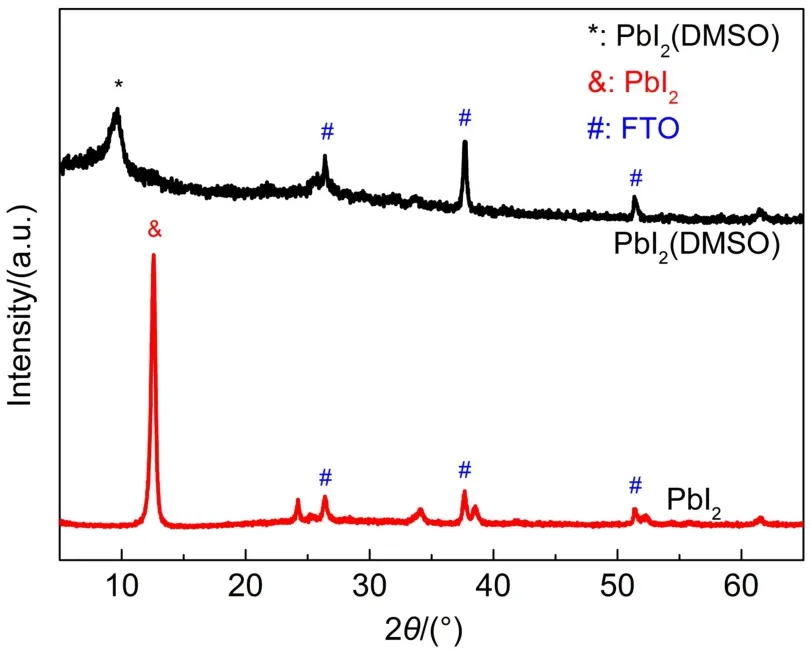
Fig.1 XRD patterns of PbI2and PbI2(DMSO)films
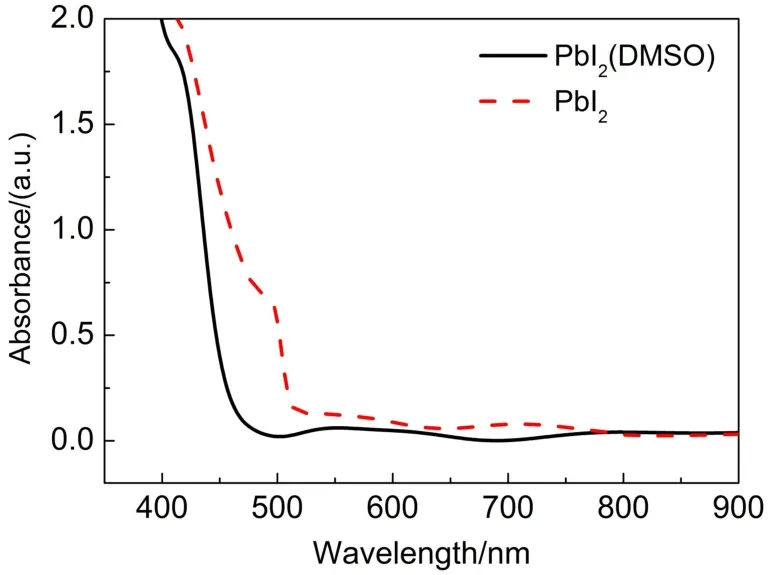
Fig.2 UV-Vis spectra of PbI2and PbI2(DMSO)films
The morphology difference of the PbI2and the PbI2(DMSO) film was shown in Fig.S1(see the Supporting Information),the PbI2(DMSO)film from the PbI2(DMSO)complex precursor solution shows almost a fully coverage surface without pin-holes and a dense layer with thickness of~235 nm above the TiO2compact layer.In contrast,the PbI2film shows a non-continuous PbI2island of~200 nm with rough surface coverage,and a loose layer with thickness of~152 nm.Therefore,the PbI2(DMSO)film has been utilized for the purpose of highly quality perovskite films.
3.2Crystal structure,optical absorption andmorphology of MAPbI3-xBrxand MAPbI3-xClxfilms
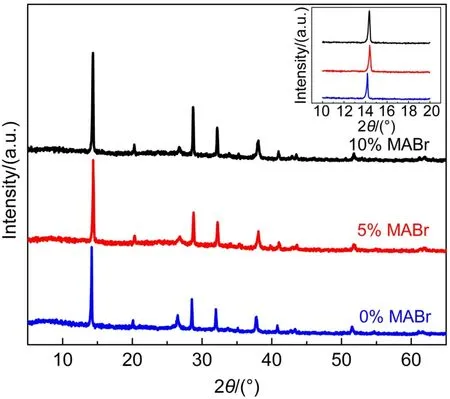
Fig.3 XRD patterns of MAPbI3-xBrxfilms withdifferent MABr molar ratios
Fig.3 and Fig.4 presented the XRD patterns of the MAPbI3-xBrxfilms with different MABr molar ratios and the MAPbI3-xClxfilms with different MACl molar ratios,respectively.Due to the chloride-iodide mixed halide perovskites exhibit low miscibility22,34and poor solubility of PbCl2in DMF23,higher contents of precursor were expected,therefore the concentration of MAI and MABr mixed in isopropanol solution was 0.35 mol·L-1,and that of MAI and MACl mixed in isopropanol solution was 0.465 mol·L-1.In Fig.3,the diffraction peak around 14.28°,which was assigned to the(110)diffraction plane of MAPbI323,shifting with the changemolar ratio of MABr in precursor solution(see Fig.3 inset),and means that the successful doping of Br into the MAPbI3-xBrxperovskite,similar results were shown in Fig.4 with those MAPbI3-xClxfilms.The energy-dispersive X-ray spectroscopy (EDX)results from Table S1(Supporting Information)also indicated that Br and Cl were incorporated in an iodide-based structure.The substitution of Br and I are reversible in perovskite material,and the ability of Br subtituting I is lower than the I substituting Br,then the doping amount of Br in the MAPbI3-xBrxfilms with MABr molar ratio of 10%was not improved significantly than the molar ratio of 5%ones,similar results were obtained in those MAPbI3-xClxfilms(Table S1).

Fig.4 XRD patterns of MAPbI3-xClxfilms with different MACl molar ratios
The UV-Vis absorption spectra of the MAPbI3-xBrxfilms with different MABr molar ratios and the MAPbI3-xClxfilms with different MACl molar ratios were presented also,the increasing absorption band-edge shift blue along with the increasing of MABr(see Fig.5),which means the successful doping of Br in the MAPbI3-xBrx,this was in agreement with the XRD results,and similar result was obtained in those MAPbI3-xClxproducts(see Fig.6).
To compare the crystalline morphologies of the perovskite films,top-view surface images and cross-sectional images were shown in Figs.7-10.The MAPbI3-xBrxperovskite films deposited from 0%MABr showed both small and large grain size up to~400 nm(see Fig.7(a,d)),the film with small grain size decreased significantly for the perovskite film formed from the 5%MABr (see Fig.7(b,e)),but film from the 10%MABr showed obvious small white particles(see Fig.7(c,f)),maybe due to the formation of perovskite materials with cubic structures35,36.Fig.8 showed the thickness of these perovskite films with 0,5%,and 10%MABr were 240,290,and 288 nm,respectively,the doping of Br results in thickness increase of the perovskite films.In addition,it is easy to find that some white particles formed at the interface between the TiO2layer and the perovskite thin films when with 5%MABr from the cross-sectional SEM images(see Fig.8(b)),which was not clear in the surface images(see Fig.7(b,e)),and more white particles in the perovskite films with the 10%MABr(see Fig.8 (c)),then may result in increased electron recombination.Fig.9 clearly shown the MAPbI3-xClxperovskite films deposited from 10%MACl with nonuniform grain size and with pin-holes(see Fig.9(a,d)),a relative uniform and full-coverage perovskite film formed from the 15%MACl(see Fig.9(b,e)),but when the content of MACl increases to 20%,significant pin-holes were generated though the perovskite film was unifrom(see Fig.9(c,f)). The thickness of MAPbI3-xClxperovskite films with 10,15,and 20%MACl were 267,317 and 314 nm,respectively(see Fig.10). In brief,the 5%MABr and 15%MACl products showed superior crystal structure and morphology in the MAPbI3-xBrxand MAPbI3-xClxperovskite films,respectively.
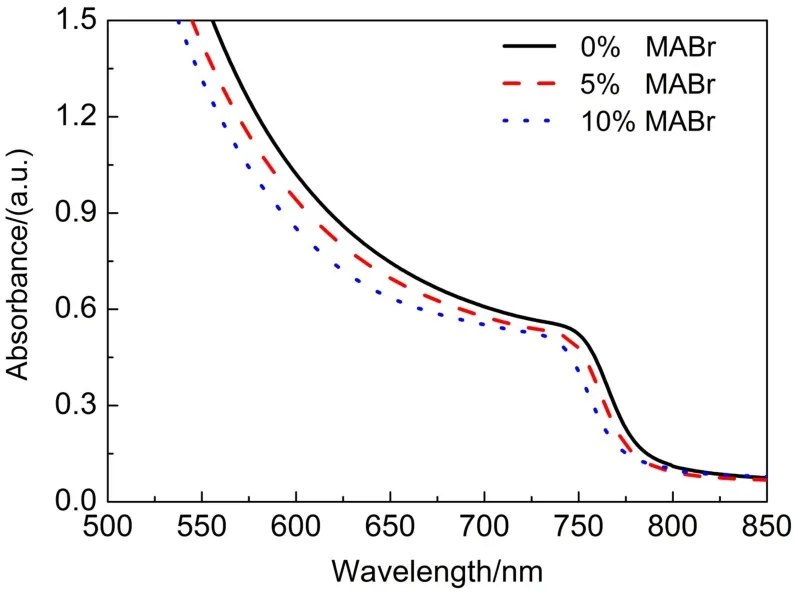
Fig.5 UV-Vis spectra of MAPbI3-xBrxfilms with different MABr molar ratios
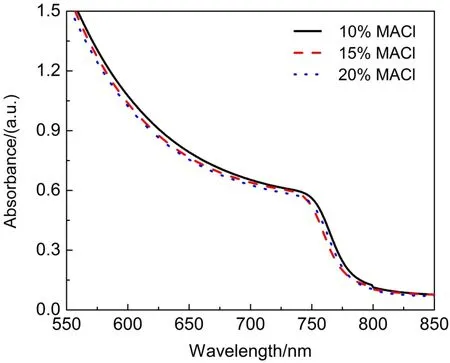
Fig.6 UV-Vis spectra of MAPbI3-xClxfilms with different MACl molar ratios
3.3Photovoltaic performance of planar perovskitesolar cells
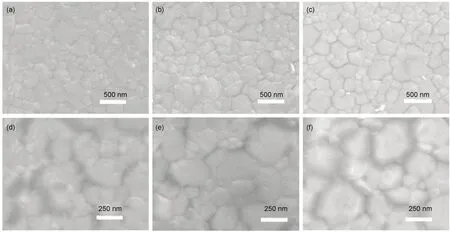
Fig.7 Surface SEM images of MAPbI3-xBrxfilm with different molar ratios of MABr

Fig.8 Cross-sectional SEM images of MAPbI3-xBrxfilm with different molar ratios of MABr
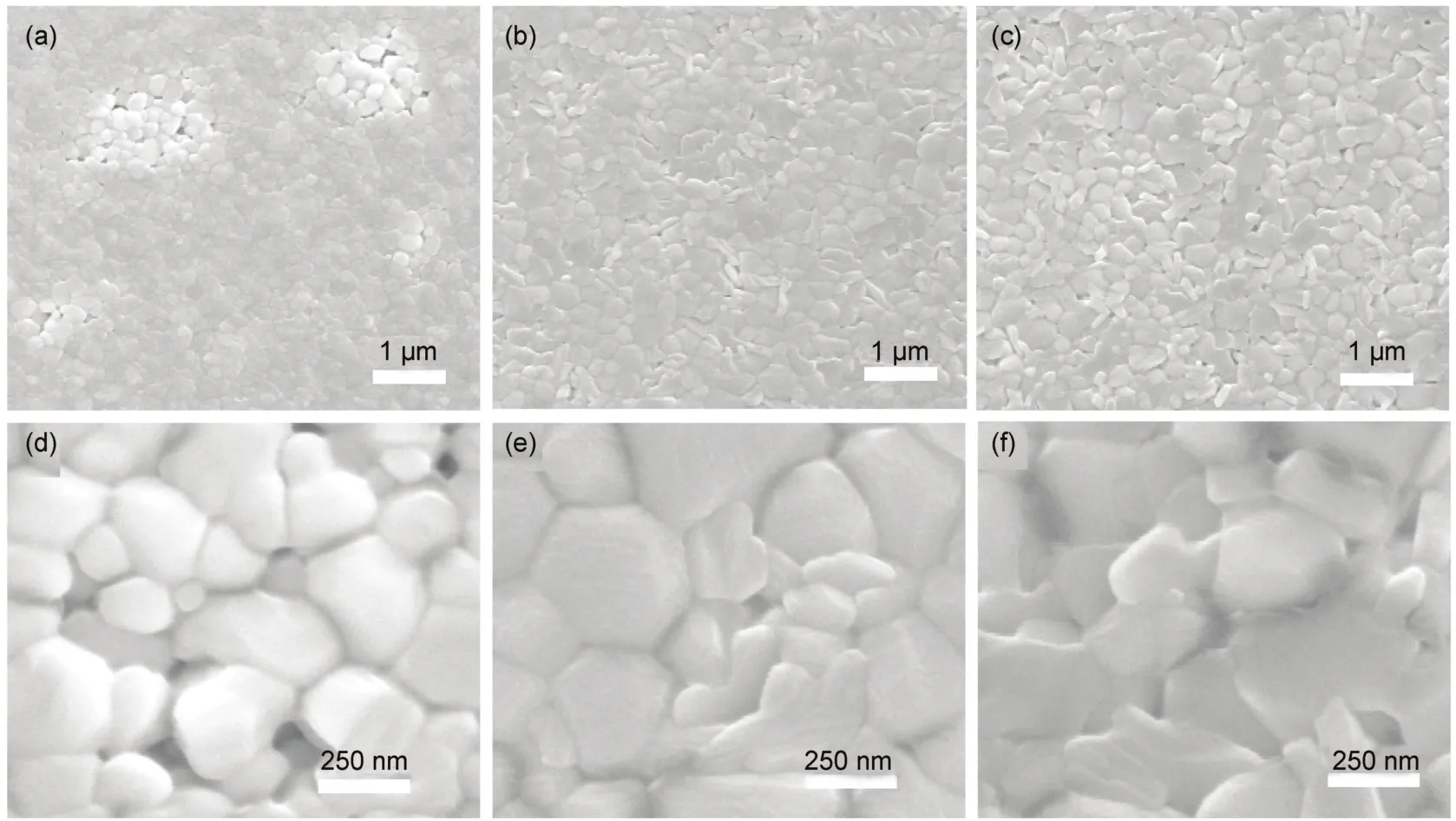
Fig.9 Surface SEM images of MAPbI3-xClxfilm with different molar ratios of MACl
The values of photovoltaic parameters of the perovskite solar cells derived from PbI2(DMSO)complex with MAI via intramolecular exchange with different molar ratios of MABr or MACl were given in Table 1.As to the planar MAPbI3-xBrxperovskite film deposited by intramolecular exchange between PbI2(DMSO) complex and 0.35 mol·L-1MAX(X=I,Br),MAX with 5% MABr exhibited better photovoltaic performance than those with 0 and 10%ones,giving an open-circuit voltage(Voc)of 1.00 V,a short-circuit current density(Jsc)of 18.0 mA·cm-2,a fill factor (FF)of 71.2%and an average PCE of 12.9%(4 cells)along with the maximum PCE of 13.2%.Meanwhile,the planar MAPbI3-xClxperovskites film deposited by intramolecular exchange between PbI2(DMSO)complex and 0.465 mol·L-1MAX(X=I,Cl),MAX with 15%MACl exhibited better photovoltaic performance than those with 10%and 20%ones,gives Voc=1.03 V,Jsc=17.6 mA· cm-2,FF=74.2%,and an average PCE of 13.4%(4 cells)along with the maximum PCE of 13.5%.The doping of Br or Cl in the perovskite film can improve the photovoltaic performance of PSCs with the precursor of MAX containing 5%MABr or 15% MACl,respectively,while further increase in the content of MABr or MACl in the precursor did no lead to significant changes in doping amounts,but small white particles or pin-holes were formed in mixed perovskite materials obviously,therefore resulted in adverse effects on the performance of perovskite solar cells.

Fig.10 Cross-sectional SEM images of MAPbI3-xClxfilm with different molar ratios of MACl

Table 1 Values of photovoltaic parameters of the perovskite solar cells derived from PbI2(DMSO)complex with MAI via intramolecular exchange with different molar ratios of MABr or MACl
4 Conclusions
In summary,uniform,dense and full coverage of mixed halide perovskites of MAPbI3-xBrxand MAPbI3-xClxwith film thickness of about 300 nm were synthesized through the Br or Cl doping, thanks to the two-step deposition of controlled concentration of the precursor solution and the intramolecular exchange of PbI2(DMSO)complex with MAX(X=I,Br)or MAX(X=I,Cl), respectively.The doping of Br or Cl in the perovskite film can improve the photovoltaic performance of PSCs with suitable amount of MABr or MACl in the MAX precursor solutions.The MAPbI3-xBrxperovskite solar cells with 5%MABr exhibited superior photovoltaic performance than the 0%and 10%MABr ones,the maximum PCE was 13.2%,as to the MAPbI3-xClxperovskite solar cells,mixed perovskite from 15%MACl exhibited superior photovoltaic performance than the 10%and 20%MACl ones,and the highest PCE recorded was 13.5%.Supporting Information:available free of charge via the internet at http://www.whxb.pku.edu.cn.
(1) Kojima,A.;Teshima,K.;Shirai,Y.;Miyasaka,T.J.Am.Chem. Soc.2009,131(17),6050.doi:10.1021/ja809598r
(2) Heo,J.H.;Im,S.H.;Noh,J.H.;Mandal,T.N.;Lim,C.S.; Chang,J.A.;Lee,Y.H.;Kim,H.J.;Sarkar,A.;Nazeeruddind, M.K.;Gratzel,M.;Seok,S.I.Nat.Photonics 2013,7(6),486. doi:10.1038/nphoton.2013.80
(3) Lee,M.M.;Teuscher,J.;Miyasaka,T.;Murakami,T.N.; Snaith,H.J.Science 2012,338(6107),643.doi:10.1126/ science.1228604
(4) Burschka,J.;Pellet,N.;Moon,S.J.;Humphry-Baker,R.;Gao, P.;Nazeeruddin,M.K.;Gratzel,M.Nature 2013,499(7458), 316.doi:10.1038/nature12340
(5)Jeon,N.J.;Noh,J.H.;Kim,Y.C.;Yang,W.S.;Ryu,S.;Seok, S.I.Nat.Mater.2014,13(9),897.doi:10.1038/nmat4014
(6) Liu,M.;Johnston,M.B.;Snaith,H.J.Nature 2013,501(7467), 395.doi:10.1038/nature12509
(7) Noh,J.H.;Im,S.H.;Heo,J.H.;Mandal,T.N.;Seok,S.I. Nano Lett.2013,13(4),1764.doi:10.1021/nl400349b
(8) Lee,J.W.;Seol,D.J.;Cho,A.N.;Park,N.G.Adv.Mater.2014, 26(29),4991.doi:10.1002/adma.201401137
(9) Pellet,N.;Gao,P.;Gregori,G.;Yang,T.Y.;Nazeeruddin,M. K.;Maier,J.;Grätzel,M.Angew.Chem.Int.Ed.2014,53(12), 3151.doi:10.1002/anie.201309361
(10) Liu,X.P.;Kong,F.T.;Chen,W.C.;Yu,T.;Guo,F.L.;Chen,J.; Dai,S.Y.Acta Phys.-Chim.Sin.2016,32(6),1347.[刘雪朋,孔凡太,陈汪超,于 婷,郭福领,陈 健,戴松元.物理化学学报,2016,32(6),1347.]doi:10.3866/PKU.WHXB201603143
(11) Bi,D.;Tress,W.;Dar,M.I.;Gao,P.;Luo,J.;Renevier,C.; Schenk,K.;Abate,A.;Giordano,F.;Correa Baena,J.P.; Decoppet,J.D.;Zakeeruddin,S.M.;Nazeeruddin,M.K.; Grätzel,M.;Hagfeldt,A.Sci.Adv.2016,2(1),e1501170. doi:10.1126/sciadv.1501170
(12) Snaith,H.J.J.Phys.Chem.Lett.2013,4(21),3623. doi:10.1021/jz4020162
(13) Chen,Q.;Zhou,H.;Hong,Z.;Luo,S.;Duan,H.S.;Wang,H. H.;Liu,Y.;Li,G.;Yang,Y.J.Am.Chem.Soc.2014,136(2), 622.doi:10.1021/ja411509g
(14) Kim,H.S.;Im,S.H.;Park,N.G.J.Phys.Chem.C 2014,118 (11),5615.doi:10.1021/jp409025w
(15) Zhou,H.;Chen,Q.;Li,G.;Luo,S.;Song,T.B.;Duan,H.S.; Hong,Z.;You,J.;Liu,Y.;Yang,Y.Science 2014,345(6196), 542.doi:10.1126/science.1254050
(16) Wu,N.;Shi,C.;Li,N.;Wang,Y.;Li,M.Mater.Res. Innovations 2016,20(5),338.doi:10.1080/ 14328917.2016.1144247
(17) Malinkiewicz,O.;Yella,A.;Lee,Y.H.;Espallargas,G.M.; Graetzel,M.;Nazeeruddin,M.K.;Bolink,H.J.Nat.Photonics 2014,8(2),128.doi:10.1038/nphoton.2013.341
(18) Zhang,J.;Shi,C.;Chen,J.;Ying,C.;Wu,N.;Wang,M.Journal of Semiconductors 2016,37(3),033002.doi:10.1088/1674-4926/37/3/033002
(19) Liu,D.;Gangishetty,M.K.;Kelly,T.L.J.Mater.Chem.A 2014,2(46),19873.doi:10.1039/C4TA02637C
(20) Xing,G.;Mathews,N.;Sun,S.;Lim,S.S.;Lam,Y.M.;Grätzel, M.;Mhaisalkar,S.;Sum,T.C.Science 2013,342(6156),344. doi:10.1126/science.1243167
(21) Stranks,S.D.;Eperon,G.E.;Grancini,G.;Menelaou,C.; Alcocer,M.J.P.;Leijtens,T.;Herz,L.M.;Petrozza,A.;Snaith, H.J.Science 2013,342(6156),341.doi:10.1126/ science.1243982
(22) Colella,S.;Mosconi,E.;Fedeli,P.;Listorti,A.;Gazza,F.; Orlandi,F.;Ferro,P.;Besagni,T.;Rizzo,A.;Calestani,G.; Gigli,G.;DeAngelis,F.;Mosca,R.Chem.Mater.2013,25 (22),4613.doi:10.1021/cm402919x
(23) Dharani,S.;Dewi,H.A.;Prabhakar,R.R.;Baikie,T.;Shi,C.; Yonghua,D.;Mathews,N.;Boix,P.P.;Mhaisalkar,S.G. Nanoscale 2014,6(22),13854.doi:10.1039/C4NR04007D
(24) Tidhar,Y.;Edri,E.;Weissman,H.;Zohar,D.;Hodes,G.;Cahen, D.;Rybtchinski,B.;Kirmayer,S.J.Am.Chem.Soc.2014,136 (38),13249.doi:10.1021/ja505556s
(25) Zhao,Y.;Zhu,K.J.Phys.Chem.C 2014,118(18),9412. doi:10.1021/jp502696w
(26) Yi,C.;Li,X.;Luo,J.;Zakeeruddin,S.M.;Grätzel,M.Adv. Mater.2016,28(15),2964.doi:10.1002/adma.201506049
(27) Jo,Y.;Oh,K.S.;Kim,M.;Kim,K.H.;Lee,H.;Lee,C.W.; Kim,D.S.Adv.Mater.Interfaces 2016,3(10),1500768. doi:10.1002/admi.201500768
(28) Heo,J.H.;Song,D.H.;Im,S.H.Adv.Mater.2014,26(48), 8179.doi:10.1002/adma.201403140
(29) Li,Y.;He,X.L.;Ding,B.;Gao,L.L.;Yang,G.J.;Li,C.X.;Li, C.J.J.Power Sources 2016,320,204.doi:10.1016/j. jpowsour.2016.04.098
(30) Yang,W.S.;Noh,J.H.;Jeon,N.J.;Kim,Y.C.;Ryu,S.;Seo,J.; Seok,S.I.Science 2015,348(6240),1234.doi:10.1126/science. aaa9272
(31) Li,W.;Fan,J.;Li,J.;Mai,Y.;Wang,L.J.Am.Chem.Soc.2015, 137(32),10399.doi:10.1021/jacs.5b06444
(32) Docampo,P.;Ball,J.M.;Darwich,M.;Eperon,G.E.;Snaith, H.J.Nat.Commun.2013,4,2761.doi:10.1038/ncomms3761
(33) Wang,Z.K.;Li,M.;Yang,Y.G.;Hu,Y.;Ma,H.;Gao,X.Y.; Liao,L.S.Adv.Mater.2016,doi:10.1002/adma.201600626
(34) Unger,E.L.;Bowring,A.R.;Tassone,C.J.;Pool,V.L.;Gold-Parker,A.;Cheacharoen,R.;Stone,K.H.;Hoke,E.T.;Toney, M.F.;McGehee,M.D.Chem.Mater.2014,26(24),7158. doi:10.1021/cm503828b
(35) Jeon,N.J.;Noh,J.H.;Yang,W.S.;Kim,Y.C.;Ryu,S.;Seo,J.; Seok,S.I.Nature 2015,517(7535),476.doi:10.1038/ nature14133
(36) Stoumpos,C.C.;Malliakas,C.D.;Kanatzidis,M.G.Inorg. Chem.2013,52(15),9019.doi:10.1021/ic401215x
Organic-Inorganic Hybrid Perovskite Solar Cells Processed with Br or Cl Doping via a Two-Step Deposition
WANG Yan-Qing1,*LILong1NIE Lin-Hui1LINan-Nan2SHICheng-Wu1,2
(1Department of Chemical Engineering and Food Processing,Xuancheng Campus,Hefei University of Technology,Xuancheng 242000,Anhui Province,P.R.China;2School of Chemistry and Chemical Engineering,Hefei University of Technology, Hefei 230009,P.R.China)
Mixed halide perovskites of MAPbI3-xBrxand MAPbI3-xClx(MA=CH3NH3)with film thickness of about 300 nm were synthesized through the Br or Cl doping,thanks to the two steps deposition of controlled concentration of the precursor solution and the intramolecular exchange of DMSO molecules intercalated in PbI2(PbI2(DMSO)complex)with MAX(X=I,Br)or MAX(X=I,Cl),respectively.The doping of Br or Cl in the perovskite film can improve the photovoltaic performance of PSCs with the precursor of MAX contains 5%(in mole fraction,same below)MABr or 15%MACl,respectively,while further increase in the content of MABr or MACl in the precursor did not lead to significant changes in doping amounts,but small white particles or pin-holes were formed in mixed perovskite materials,therefore resulted in adverse effects on the performance of solar cells.The MAPbI3-xBrxperovskite solar cells with 5%MABr in precursor solution showed a power conversion efficiency(PCE)of 13.2%,and the MAPbI3-xClxperovskite solar cells with 15%MACl in precursor solution showed the highest PCE of 13.5%.
Perovskite solar cell;PbI2(DMSO)complex;Doping;Two-step deposition
O644
10.3866/PKU.WHXB201607272
Received:May 25,2016;Revised:July 27,2016;Published online:July 27,2016.
*Corresponding author.Email:yqwang@hfut.edu.cn;Tel:+86-563-3831302.
The project was supported by the National Natural Science Foundation of China(51472071,51272016,51072043)and Startup Foundation of Hefei University of Technology,China(JZ2014HGBZ0371,JZ2014HGBZ0358).
国家自然科学基金(51472071,51272016,51072043)和校博士启动基金(JZ2014HGBZ0371,JZ2014HGBZ0358)资助项目
